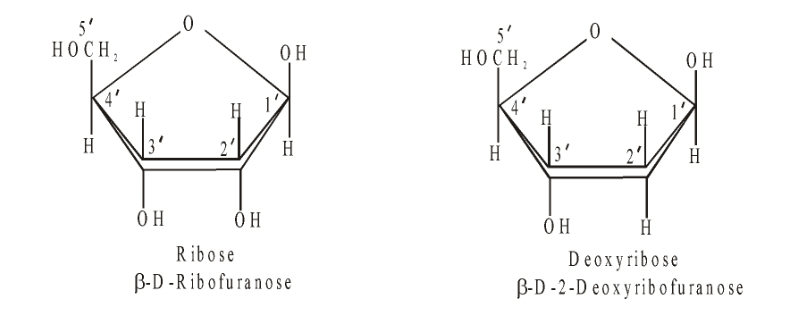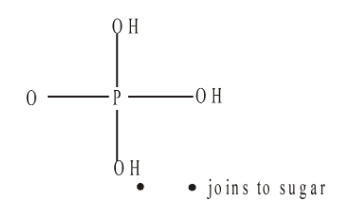Structures of Nucleotides
Molecules of Cell of Class 11
A nucleotide has three components, a 5-carbon sugar, a nitrogenous base and phosphoric acid.
Sugar
Those containing ribose are called ribonucleic acids or RNA and those containing deoxyribose (ribose with an oxygen atom removed from carbon atom 2) are called deoxyribonucleic acids or DNA.

Fig. Pentose sugars of nucleotides
Bases
Each nucleic acid contains four different bases, two purines and two pyrimidines.
The nitrogen in the rings gives the molecules their basic nature.
The two purines are adenine (A) and guanine (G). The two pyrimidines are thymine (T) and cytosine(C) in DNA, with uracil (U) in place of thymine in RNA.
Thymine is chemically very similar to uracil (it is 5-methyl uracil, that is uracil with a methyl group. –CH3 on carbon atom 5).
Purines have two rings and pyrimidines have one ring in their structure.

Fig. Common Purine and Pyrimidine bases
Phosphoric Acid : Phosphoric Acid gives nucleic acids their acid character.

Fig. Phosphoric acid
- Introduction of Cell Molecule
- Carbohydrates
- Structural Polysaccharides
- Sugar Part in Carbohydrates
- Storage Of Polysaccharides
- Lipids
- Constituents Of Lipids
- Types Of Lipids
- Amino Acid
- Protein
- Classification of Proteins
- Structure Of Proteins
- Denaturation and renaturation of proteins
- Nucleotides
- Structures of Nucleotides
- Formation of Nucleotides
- Vitamines of Nucleotides
- Nucleic Acid
- Minerals
- Exercise 1
- Exercise 2
- Exercise 3
- Exercise 4
- Exercise 5









